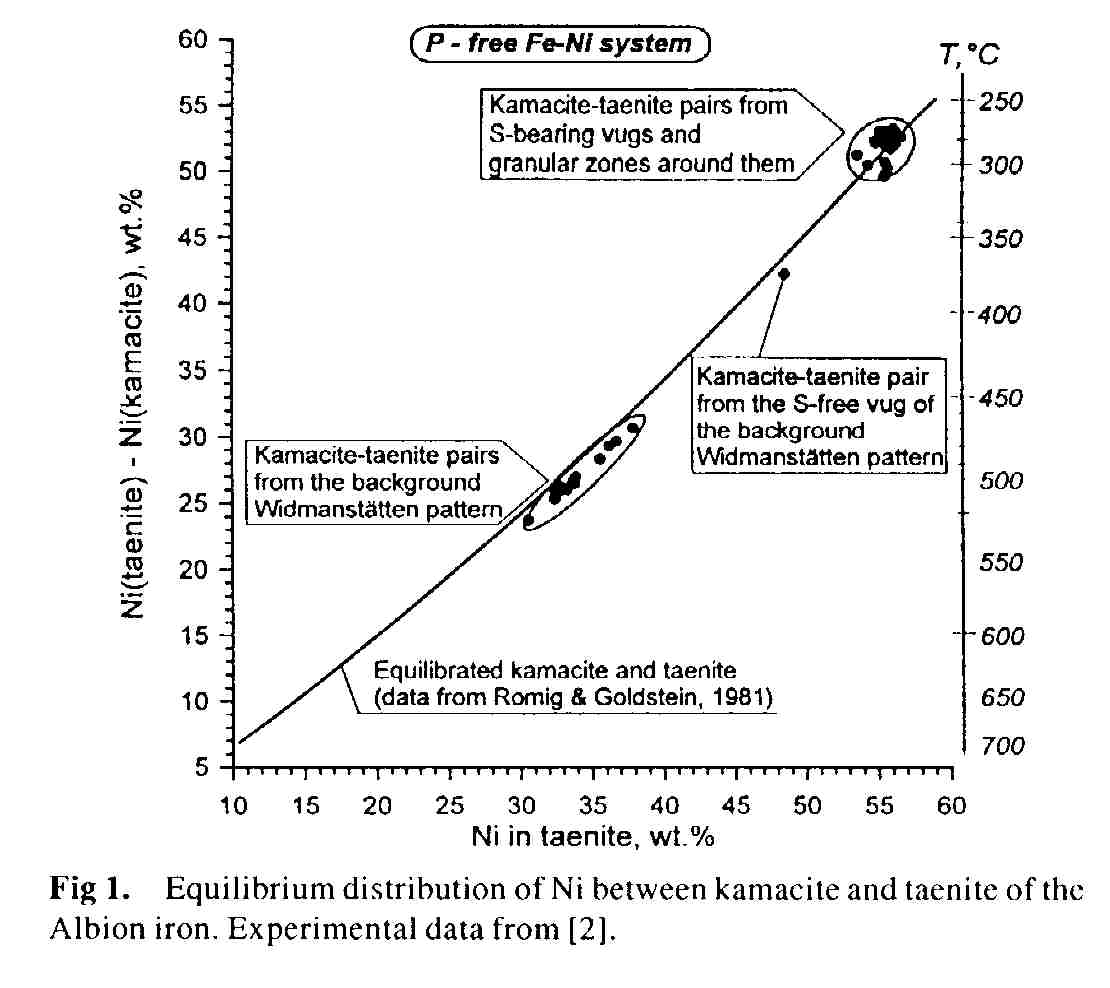[Date Prev][Date Next][Thread Prev][Thread Next][Date Index][Thread Index]
Drusy Vugs In The Albion Iron Meteorite
- To: meteorite-list@meteoritecentral.com
- Subject: Drusy Vugs In The Albion Iron Meteorite
- From: Bernd Pauli <bernd.pauli@lehrer1.rz.uni-karlsruhe.de>
- Date: Fri, 12 Jun 1998 21:43:17 +0200
- Old-X-Envelope-To: <meteorite-list@meteoritecentral.com>
- Resent-Date: Fri, 12 Jun 1998 15:56:28 -0400 (EDT)
- Resent-From: meteorite-list@meteoritecentral.com
- Resent-Message-ID: <"5_wA5B.A.vf.AcYg1"@mu.pair.com>
- Resent-Sender: meteorite-list-request@meteoritecentral.com
(Meteoritics 31-4, 1996, A107):
Drusy Vugs In The Albion Iron Meteorite: Early Speculations On The
Origin
M.I. Petaev and U.B. Marvin, Harvard-Smithsonian Center for
Astrophysics,
Cambridge MA 02138, USA.
The crystalline linings in the vugs of the Albion iron, described in our
companion paper [1], provide clear evidence of deposition from a fluid
phase - most likely a vapor - that passed through the mass of iron at a
late stage in its history.
Figure I (based on data by [2]) indicates that the kamacite and taenite
of the background Widmanstätten pattern achieved equilibrium at
450°-550°C, which is in good agreement with the temperature range of
cessation of diffusional equilibration of kamacite and taenite in IVA
irons. However, the compositions of the Ni-poor kamacite and Ni-rich
tetrataenite in spheroidal masses and rims surrounding them within one
of the vugs correspond to equilibrium at 250°-300°C. The latter is
consistent with low Cr content in iron sulfide coexisting with euhedral
daubréelite crystals, indicating ambient temperature <350°C [3]. This
implies a different mechanism of alloy formation in the vugs. We
conclude that the vugs were once filled with a homogeneous fluid phase,
which upon cooling to low temperatures deposited dissolved Fe, Ni, Co,
Cr, and S as Ni-poor kamacite, Ni-rich tetrataenite, and daubréelite in
the vugs. The residue of the fluid reacted with metallic phases to form
Fe sulflde films along grain boundaries. Ultimately the gaseous carrier
escaped from the vugs. The composition of the carrier gas remains
unknown; CO (carbonyls) or wet H (H2 + traces of H2O) are plausible
candidates.
We investigate two possible scenarios for the formation of the open
cavities. Either the voids are primary features, such as vapor-filled
bubbles, that were entrapped by the solidification of the Fe,Ni alloy
and survived its period of exsolution, or they are secondary features
formed by the corrosion and removal of minerals in the solid iron. Tle
primary nature of the vugs would require an entrapment of highly
fractionated fluids and their preservation during exsolution of primary
austenite grains in order to explain the difference in mineralogy
between large and small vugs. The secondary nature of vugs implies that
the large and small vugs were initially filled with troilite (ubiquitous
troilite nodules in IVA irons) and minerals exsolved from the metal
(phosphides, carbides, or nitrides?) respectively. Later reaction with a
gaseous carrier percolating through metal along grain boundaries
resulted in mobilization and redeposition of metallic elements in
troilite nodules. Most of the S escaped as gaseous species (COS or
H2S). Minerals of small cavities were leached out completely. Neither
of these scenarios accounts for all observations, but both scenarios are
inconsistent with formation by shock ubiquitous in many IVA irons [4].
References:
[1] Marvin U.B. et al., (Meteoritics 31-4, 1996, A083).
[2] Romig A.D. and Goldstein J.I. (1981) GCA, 45, 1187.
[3] Balabin A. (1996) unpublished data.
[4] Buchwald V.F. (1975) Handbook of Iron Meteorites.

